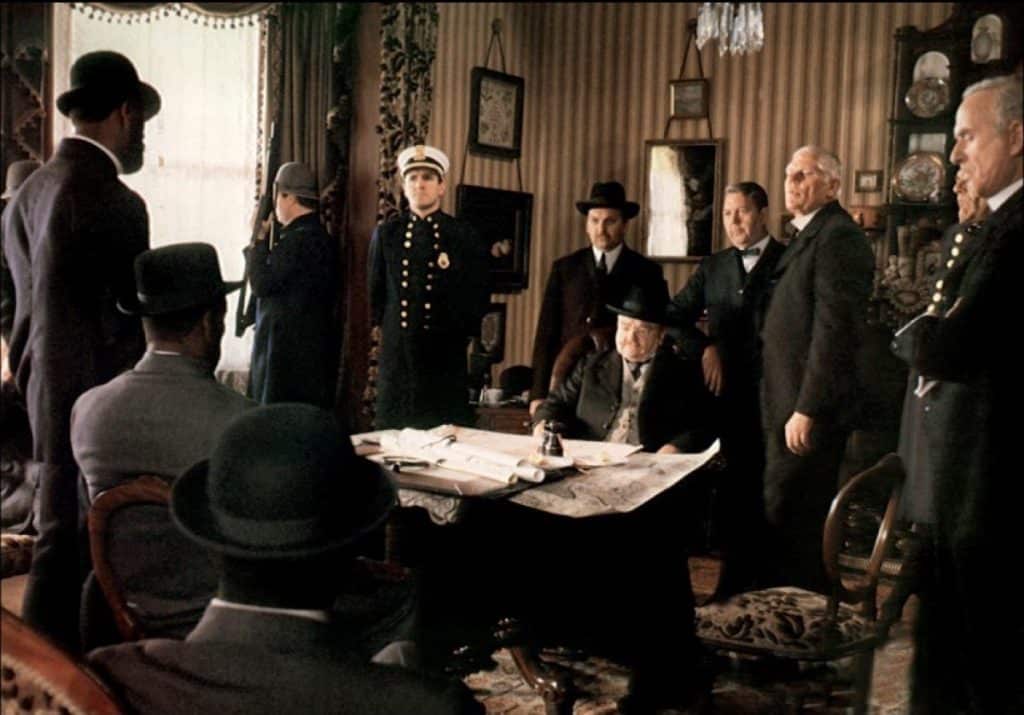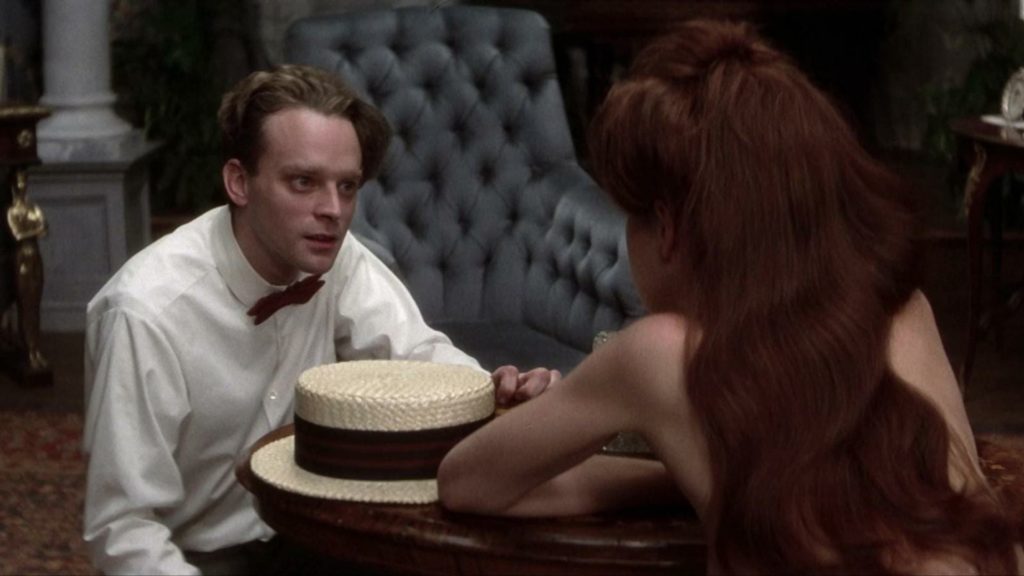Read also:
How to Watch FX Live Without CableHow To Watch AMC Without CableHow to Watch ABC Without CableHow to Watch Paramount Network Without CableMilos Forman’s 1981 adaptation of the E.L. Doctorow novel survived a change of directors to become a fascinating cult curio 40 years on.
When it was announced in 1975 that Robert Altman, then riding high on the success of his groundbreaking epic Nashville, had been hired to direct the film version of E.L. Doctorow’s sprawling novel Ragtime, it almost seemed too good to be true. After all, not only was he one of the most inventive American filmmakers of the era, he seemed uniquely qualified to bring the book to the screen. Additionally, with its sprawling cast of characters, multiple storylines, and cheeky mixture of fact and fiction, Nashville now seems like an experiment to test out potential approaches for tackling that book.
That dream project soon turned into a nightmare the very next year, when Altman began feuding with producer Dino De Laurentiis during the post-production of what was to be their collaboration, the Ragtime-esque Buffalo Bill and the Indians. When Altman suggested the best way to capture Doctorow’s large-canvas narrative was to tell it over the course of two three-hour epics, that (along with the critical and commercial failure of Buffalo Bill and the Indians that summer), inspired De Laurentiis to fire Altman altogether. He would eventually be replaced by Miloš Forman.
Having just swept the Oscars the year prior with One Flew Over the Cuckoo’s Nest, Forman was clearly a hot commodity at the time. But many thought the Czech emigrant to be an odd choice for a project so thoroughly seeped in American history and culture. Further controversy emerged among fans of the book when it was reported that the film would eschew most of the book’s multiple storylines in order to concentrate most of the narrative on just one.

Then, once the film was finally produced in 1981, it wound up being acquired for distribution by Paramount, whose own hugely expensive in-house historical epic, Warren Beatty’s Reds, would be coming out at roughly the same time and with far more time and money spent publicizing it. As a result, while the film would earn largely respectful reviews and garner eight Oscar nominations, it flopped at the box office and won no awards.
While Forman would rebound a couple of years later with a second Oscar-winning hit in Amadeus (1984), Ragtime would more or less slip through the cracks, notable only for being the final film appearance by the legendary James Cagney, coaxed out of retirement to play the small-but-showy role of real-life New York Police Commissioner Rhinelander Waldo.
This is not true, as anyone who takes a chance on the new 40th-anniversary Blu-Ray edition of the film can attest. Among the many extras on the new Blu is a workprint version of the film which is said to more closely align with the cut preferred by Forman (who passed away in 2018).
Don’t get too excited by the possibility of a maximum-length vision of the film, though. The workprint version is only about twenty minutes longer; roughly half of that footage alone comes from a single scene—a meeting of the minds between anarchist Emma Goldman (Mariclare Costello) and chorus girl Evelyn Nesbitt (Elizabeth McGovern). Brief expansions of moments in the regular cut make up most of the rest.
Ragtime still has a power and sweep that cannot be denied.
None of these additions alter the decision by Forman and screenwriter Michael Weller to reduce the book’s vast array of storylines to two, beginning with the murder of architect Stanford White (Norman Mailer) by millionaire industrialist Harry K. Thaw (Robert Joy) over the former’s alleged corruption of the latter’s young wife, Nesbitt, and the show trial that emerged in its wake.
The second, and more significant, plot involves Coalhouse Walker Jr. (Howard Rollins, making his screen debut), a prosperous African-American ragtime pianist whose brand new Model T is trashed by a group of firemen under the leadership of their racist chief (Kenneth McMillian). After being arrested for causing a disturbance and denied legal recourse, he eventually leads a group of supporters on a reign of urban terrorism as a way of getting the authorities to turn Conklin over to them.
These two narratives are connected by an unnamed prosperous family from New Rochelle who becomes involved. Mother (Mary Steenburgen) takes in Coalhouse’s lover and their infant child and refuses to hand the latter over to Father (James Olsen) for the police to use as a bargaining chip. Meanwhile, her Younger Brother (Brad Dourif) begins an affair with Nesbitt and later finds himself standing alongside Coalhouse during the standoff.
Watching the film now, it’s easy to understand why so many people were so disappointed with it when it first came out. Although it does try to encompass some of the scope of the novel (newsreels mention the famous people of the day and the occasional presence of such now-peripheral characters as immigrant silhouette artist-cum-filmmaker Tateh (Mandy Patinkin)), the concentration on the Coalhouse Walker story meant that the collisions between the real-life personages and Doctrow’s fictional characters were no longer there. To many, what remained was a bit of a bummer, albeit a handsomely mounted one.

Now long removed from the initial fervor over the book and the loss of Altman, Ragtime plays a lot better today than it did back in 1981. Obviously, anyone who has read the book will mourn the loss of some element that was left out and some of the stuff involving Younger Brother’s obsessive pursuit of Nesbitt does not come off very well today (not just because of Dourif’s twitchy presence).
However, the Coalhouse Walker narrative powerfully illustrates the sheer cruelty of racism in vivid terms, while stirring intriguing moral debate about how far one should go to right a wrong when justice is not available through normal channels. Rollins is absolutely mesmerizing as Coalhouse and deservedly received an Oscar nomination for his work. Kenneth McMillian is even more repulsive here than he would be a couple of years later in Dune, another De Laurentiis-produced adaptation of a book many thought too complex to film.
One amusing byproduct that comes from watching Ragtime today is the way that it utilizes legendary performers and then-unknowns to help make up its sprawling cast. Among the veterans, Cagney stands out the most with a colorful turn that’s a lot of fun and includes one great line when he disgustedly tells Conklin, “That library over there is worth millions and people keep telling me you’re a worthless piece of slime.”
Cagney’s long-ago co-star Pat O’Brien also came out of retirement to play a lawyer in what would be his last screen role as well, and Donald O’Connor shows up briefly as Nesbitt’s dance instructor. And while not an actor per se, Norman Mailer does make a vivid impression in his few scenes as White, whose murder inspired the first Trial of the Century of the 1900s. In this way, Ragtime inadvertently recreates a little of the feel of the book’s use of famous figures.
Ragtime inadvertently recreates a little of the feel of the book’s use of famous figures.
In addition to Rollins, Ragtime also featured a number of stars-to-be in early appearances. McGovern had attracted notice the year before for Ordinary People, and her funny turn as the not-so-dumb Nesbitt earned her an Oscar nomination as well. Other famous faces who turn up here include Jeff Daniels, Samuel L. Jackson, Debbie Allen, Fran Drescher, and John Ratzenberger. Behind the scenes, Randy Newman contributed his first proper film score, and the song “One More Hour” earned him his first two Oscar nominations and kicked off a second career that found him at last following in the family trade as a film composer.
Of the two versions of Ragtime that now exist via this Blu-Ray, the original theatrical is probably still the way to go. Although some of the bits found in the workprint are interesting, none are essential, and the big Goldman/Nesbitt sequence is frankly a bit of a dud. And yet, while the film is undeniably flawed in its attempt to telescope its story to the confines of a practical film running time, Ragtime still has a power and sweep that cannot be denied. Until someone makes another attempt to visualize it (it would seem ripe for an HBO miniseries treatment), it remains a fascinating work that is eminently worthy of rediscovery.